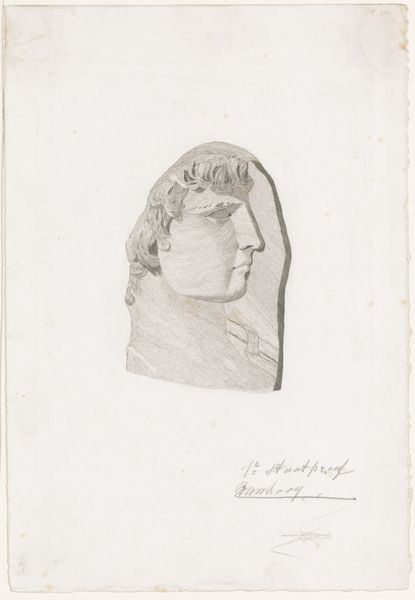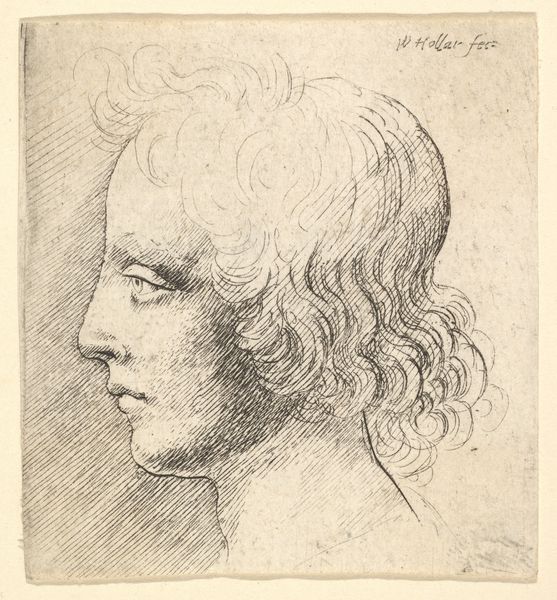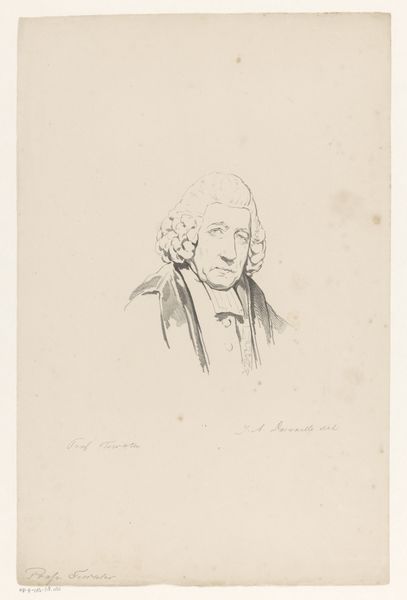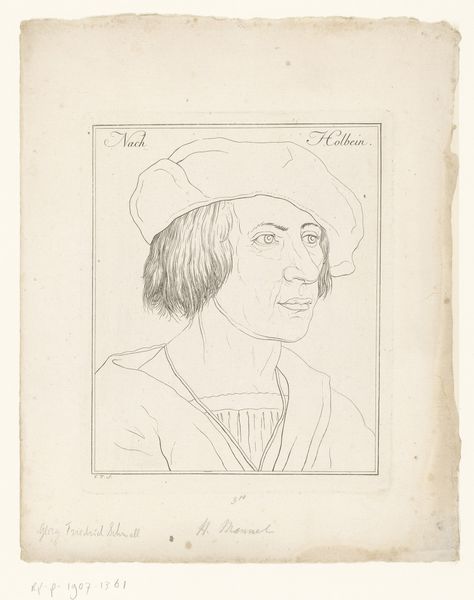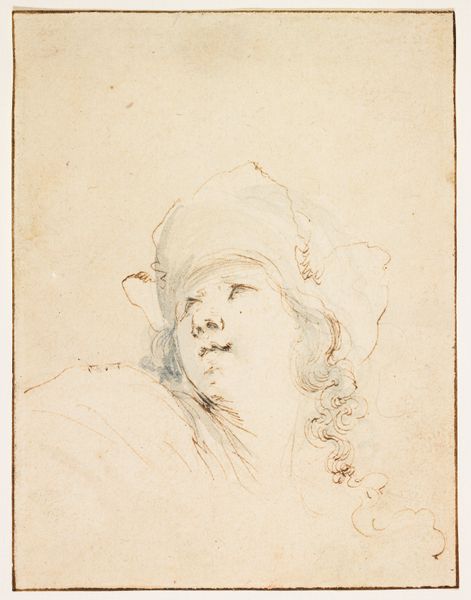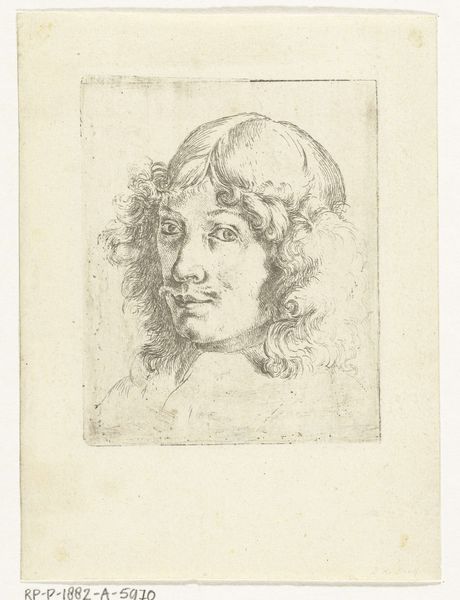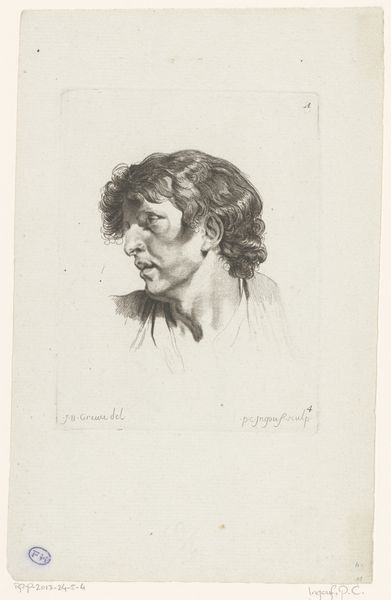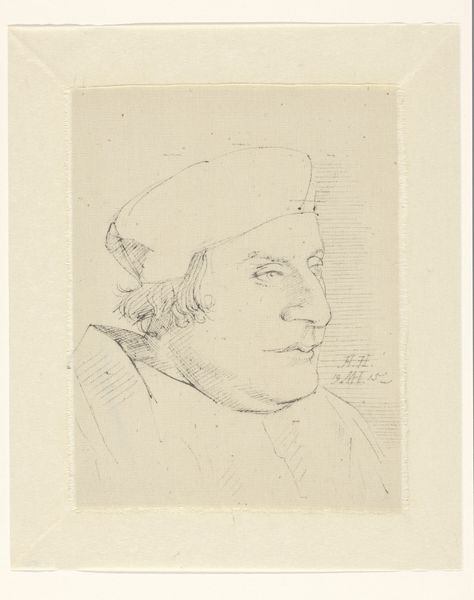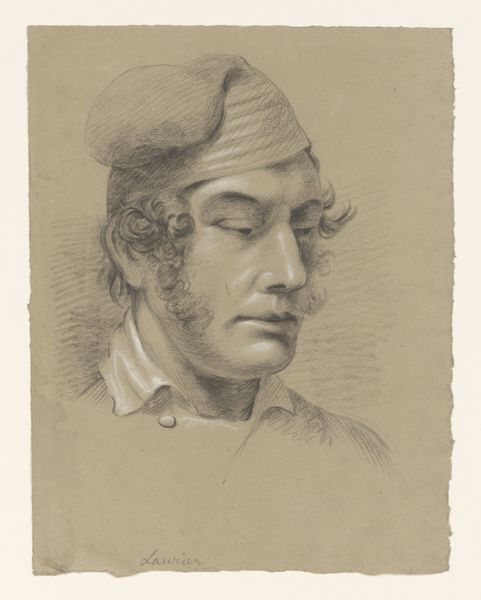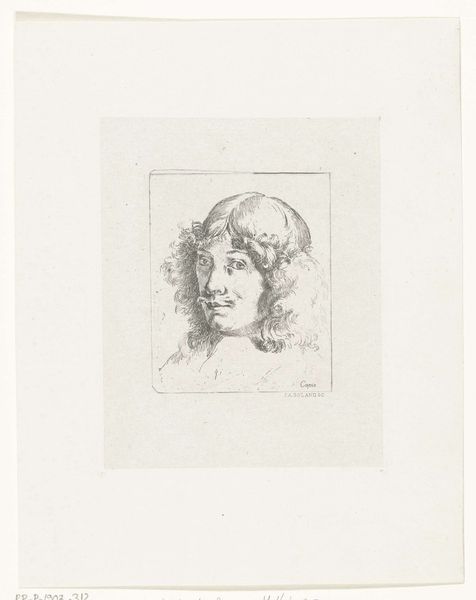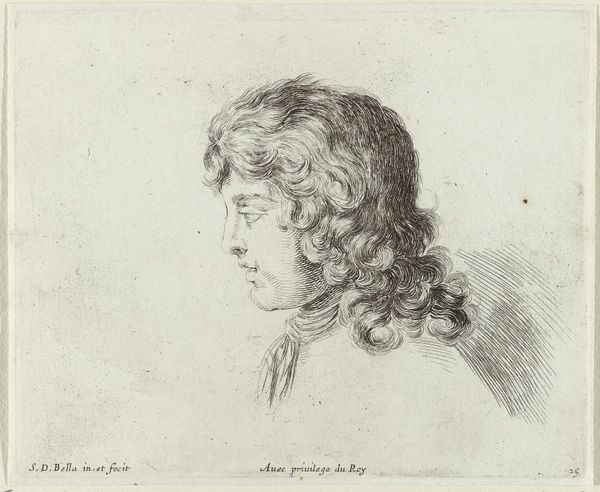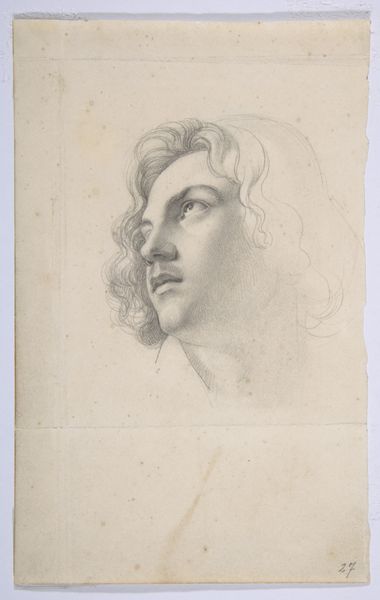
drawing, pencil
#
portrait
#
drawing
#
classical-realism
#
figuration
#
pencil
#
history-painting
#
academic-art
Dimensions: height 462 mm, width 325 mm
Copyright: Rijks Museum: Open Domain
Editor: So, this is Antonio Marini's "Portret van schilder Masaccio," a pencil drawing from somewhere between 1798 and 1861. There's a real stillness to it, almost reverential. What stands out to you when you look at this portrait? Curator: It's interesting to consider this drawing within the context of art academies during that period. They promoted the idea of artistic genius, often linked to the Renaissance. How does idealizing figures like Masaccio shape the understanding and production of art? Editor: So, this is less about Masaccio himself and more about what he *represented* at the time Marini created this work? Curator: Precisely. Marini, working in the 19th century, likely saw Masaccio through a romanticized lens. Consider how the academic system used the "old masters" to dictate standards, creating a hierarchy of artistic value and influencing whose art was celebrated. Who had access to studying these artworks? Who got to decide what "genius" looked like? Editor: That’s a good point. It makes you wonder whose stories get told and how the selection is made. Was this image meant for public display, or was it part of a private collection? Did that affect its reception? Curator: That is absolutely central! Thinking about the intended audience and the location gives us a whole other set of questions. If this image were for public consumption, what message was the institution trying to convey about Masaccio, about art history, and about contemporary artistic practice? Editor: I see… It’s like peeling back the layers of how art history is constructed. I hadn't really considered how institutional power shapes our perceptions. Curator: And by understanding this, we can start to challenge those very power dynamics. The image isn't just a portrait; it's a product of its time, revealing the values and beliefs of the institutions that promoted it. It reminds us to always question the narratives we inherit. Editor: Thanks, I will definitely be thinking about this from now on when I look at art!
Comments
No comments
Be the first to comment and join the conversation on the ultimate creative platform.
